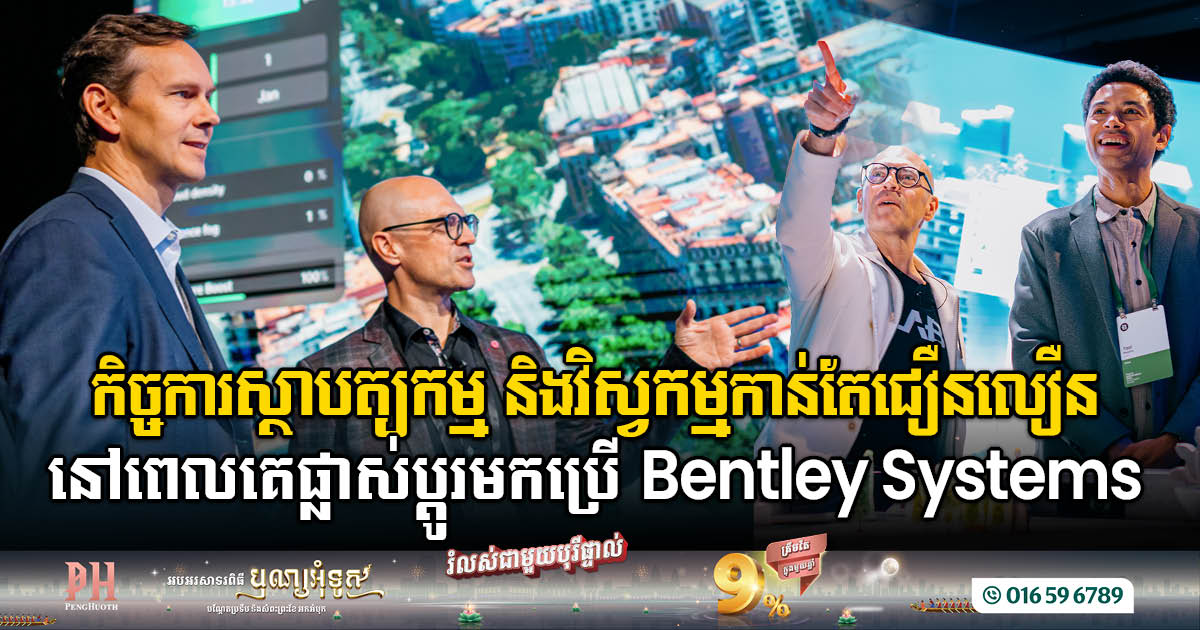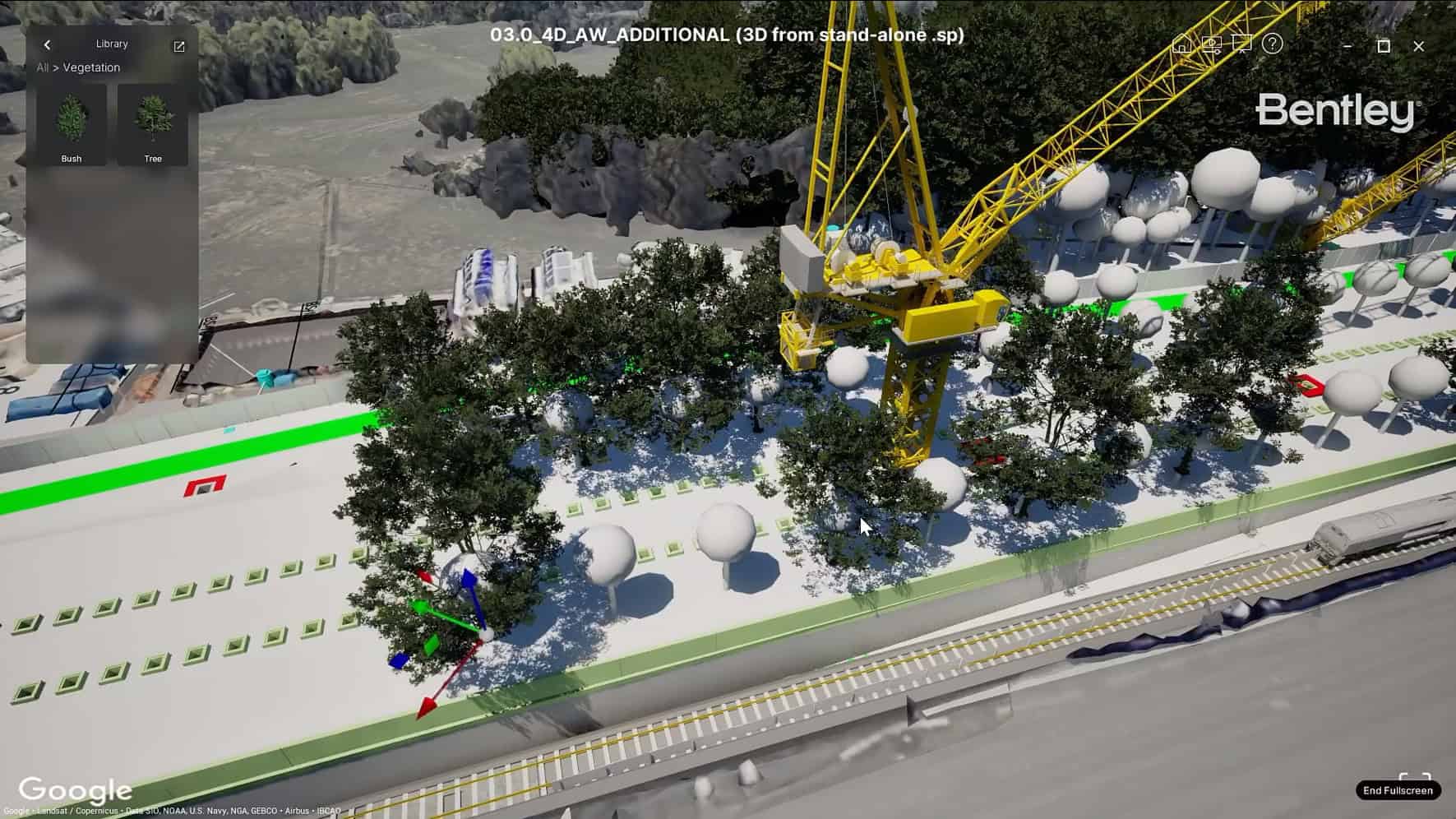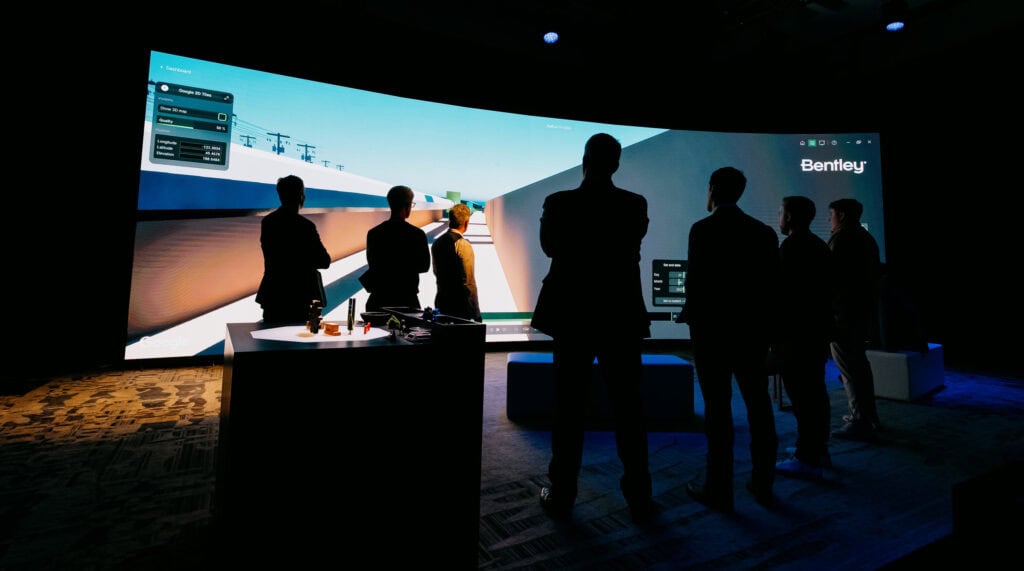កម្ពុជា-ឡាវ ឯកភាពគ្នាជំរុញការនាំចេញកសិផលរបស់កម្ពុជាទៅប្រទេសទី៣ តាមរយៈរថភ្លើងល្បឿនលឿននៅឡាវ
កម្ពុជា និងឡាវ បានឯកភាពគ្នាជំរុញកសិពាណិជ្ជកម្មរវាងប្រទេសទាំងពីរ ដោយផ្តោតលើការនាំចេញផលិតផលស្វាយទៅប្រទេសទី៣ ដោយប្រើប្រាស់ប្រព័ន្ធផ្លូវដែកនិងរថភ្លើងល្បឿនលឿន ដើម្បីជំរុញកសិពាណិជ្ជកម្មទ្វេភាគី។ ការឯកភាពនេះ ត្រូវបានធ្វើឡើងរវាងឯកឧត្តម ឌិត ទីណា រដ្ឋមន្ត្រីក្រសួងកសិកម្មកម្ពុជា និងក្រសួងកសិកម្មឡាវ ក្នុងឱកាសបំពេញទស្សនកិច្ចផ្លូវការនៅប្រទេសឡាវ ចាប់ថ្ងៃទី៣០ ខែមេសា ដល់ថ្ងៃទី៣ ខែឧសភា ឆ្នាំ២០២៥ ។ នៅក្នុងដំណើរទស្សនកិច្ចនេះ ភាគីទាំងពីរបានឯកភាពគ្នាជំរុញកសិពាណិជ្ជកម្មរវាងប្រទេសទាំងពីរ ដោយផ្តោតលើការនាំចេញផលិតផលស្វាយទៅប្រទេសចិន ឬប្រទេសទី៣ តាមរយៈការប្រើប្រាស់ប្រព័ន្ធផ្លូវដែកនិងរថភ្លើងល្បឿនលឿនឆ្លងកាត់ប្រទេសឡាវ ដើម្បីបើកទីផ្សារថ្មីសម្រាប់ផលិតផលកសិកម្មរបស់កម្ពុជា។ លើសពីនេះ ភាគីទាំងពីរ ក៏បានឯកភាពបន្តពង្រឹងកិច្ចសហប្រតិបត្តិការផ្សេងៗទៀតលើឆាកអន្តរជាតិក្នុងវិស័យកសិកម្ម ដើម្បីផលប្រយោជន៍រួមនៃប្រទេសទាំងពីរផងដែរ។ គួរបញ្ជាក់ថា ដំណើរទស្សនកិច្ចរបស់ក្រសួងកសិកម្មទៅកាន់ប្រទេសឡាវ ក៏មានគោលដៅស្វែងយល់ពីដំណើរការទាញយករ៉ែ Potash មកប្រើប្រាស់ជាសារធាតុផ្សំមួយក្នុងការផលិតជីកសិកម្ម និងភ្ជាប់ទំនាក់ទំនងឱ្យអ្នកវិនិយោគកម្ពុជាអាចនាំយកផលិតផលសម្រេចជីប៉ូតាស (potash-based fertilizer) មកប្រើប្រាស់ក្នុងការផលិតជីនៅកម្ពុជាថែមទៀត។ ភាពជាដៃគូនេះគឺជាជំហានដ៏ជោគជ័យមួយឆ្ពោះទៅរកការលើកកម្ពស់សន្តិសុខស្បៀង និងកំណើនសេដ្ឋកិច្ចទាំងនៅក្នុងប្រទេសកម្ពុជា និងឡាវ ដោយសង្កត់ធ្ងន់លើការប្តេជ្ញាចិត្តរបស់ពួកគេក្នុងការអភិវឌ្ឍផ្លូវពាណិជ្ជកម្មកសិកម្មប្រកបដោយនិរន្តរភាព៕ - Video Advertisement -
ក្រុមហ៊ុន AEON បើកការដ្ឋានសង់ផ្សារទំនើបថ្មី១ទៀតតម្លៃជិត ៤៦លានដុល្លារ នៅវៀតណាម
នៅក្នុងការផ្លាស់ប្តូរយុទ្ធសាស្រ្តចំពេលមានការធ្លាក់ចុះនៃសេដ្ឋកិច្ចពិភពលោក ក្រុមហ៊ុនលក់រាយដ៏ធំរបស់ជប៉ុន AEON កំពុងពង្រឹងវត្តមានរបស់ខ្លួននៅក្នុងប្រទេសវៀតណាមជាមួយនឹងការបើកការដ្ឋានសាងសង់ផ្សារទំនើបថ្មីមួយ។ នៅថ្ងៃទី១៩ ខែមេសា ឆ្នាំ២០២៥ AEON Vietnam បានចាប់ផ្តើមការដ្ឋានសាងសង់ផ្សារទំនើប AEON HAI DUONG ក្នុងខេត្ត Hai Duong ដែលស្ថិតនៅភាគខាងជើងទីក្រុងហាណូយ។ គម្រោងនេះមានទុនវិនិយោគ ១,១៨ ពាន់លានដុង (ស្មើនឹងប្រមាណ ៤៥,៦១ លានដុល្លារ) នេះបើយោងតាមការចុះផ្សាយរបស់សាព័ត៌មាន theinvestor.vn នៅថ្ងៃទី២១ ខែមេសា ឆ្នាំ២០២៥។ គម្រោងផ្សារទំនើប AEON HAI DUONG នេះ មានទីតាំងស្ថិតនៅក្នុងឃុំ Lien Hong ក្រុង Hai Duong នៃខេត្ត Hai Duong គ្រោងនឹងបើកដំណើរការនៅក្នុងត្រីមាសទី៣ ឆ្នាំ២០២៦ ដោយរំពឹងថានឹងអាចបង្កើតការងារបានប្រមាណ ១.០០០កន្លែងថែមទៀត។ ផ្សារទំនើបថ្មីនេះ នឹងត្រូវសាងសង់លើផ្ទៃដីសរុបប្រមាណ ៣,៦ហិកតា ដែលនឹងមានកន្លែងចតរថយន្តធំទូលាយ អាចផ្ទុករថយន្តបានប្រហែល ៦០០គ្រឿង និងម៉ូតូ ១២០០គ្រឿង […]
ម៉ាឡេស៊ីបញ្ចេញថវិកា ២៥០លានដុល្លារ បណ្តុះអ្នកជំនាញផ្នែកបន្ទះឈីប ១ម៉ឺននាក់ ដើម្បីធ្វើបដិវត្តន៍រចនាបន្ទះឈីបក្នុងស្រុក
ប្រទេសម៉ាឡេស៊ី បានចុះហត្ថលេខាលើភាពជាដៃគូដែលមានតម្លៃ ២៥០លានដុល្លារ ជាមួយ ក្រុមហ៊ុន Arm Holdings ដែលមានមូលដ្ឋាននៅចក្រភពអង់គ្លេស ក្នុងកិច្ចព្រមព្រៀង ផ្តល់ឱ្យប្រទេស អាស៊ីអាគ្នេយ៍មួយនេះ ទទួលបានកម្មសិទ្ធិបញ្ញាកម្រិតខ្ពស់របស់ក្រុមហ៊ុនអាម (Arm ដែលក្រុមហ៊ុនលំដាប់ខ្ពស់ផ្នែកស៊ីមីកុងដាក់ទ័រ) ជាមួយនឹងគោលបំណងផ្លាស់ប្តូរពីសេដ្ឋកិច្ចផ្អែកលើ ការផលិតផល ទៅជាមជ្ឈមណ្ឌលរចនា និងការបង្កើតថ្មីដែលមានតម្លៃខ្ពស់នៅក្នុងខ្សែច្រវាក់ ផ្គត់ផ្គង់ទីផ្សារបន្ទះឈីបសកលលោក នេះបើយោងតាមសេចក្តីរាយការណ៍ដោយ TechHQ នៅថ្ងៃទី ១៣ ខែមីនា ឆ្នាំ ២០២៥។ កិច្ចព្រមព្រៀងនេះត្រូវបានចុះហត្ថលេខាជាផ្លូវការនៅថ្ងៃទី ៥ ខែមីនា ឆ្នាំ ២០២៥ នៅទីក្រុង Kuala Lumpur ដោយនាយករដ្ឋមន្ត្រី Anwar Ibrahim និងនាយកប្រតិបត្តិក្រុមហ៊ុន Arm លោក Rene Haas។ ការបោះជំហានថ្មីលើវិស័យបន្ទះឈីបនេះ គឺជាចំណុចរបត់ដ៏សំខាន់មួយនៅក្នុងមហិច្ឆតា របស់ប្រទេសម៉ាឡេស៊ីក្នុងការក្លាយជាអ្នកដឹកនាំក្នុងតំបន់ លើវិស័យរចនាបន្ទះឈីប AI ដែលមានប្រសិទ្ធភាពខ្ពស់។ នៅក្រោមលក្ខខណ្ឌនៃកិច្ចព្រមព្រៀងរយៈពេលមួយទសវត្សរ៍នេះ ប្រទេសម៉ាឡេស៊ី នឹងផ្តល់អាជ្ញាប័ណ្ណ ប្រព័ន្ធរងកុំព្យូទ័រ (CSS) ចំនួនប្រាំពីរពីក្រុមហ៊ុន Arm […]
ក្នុងត្រីមាសទី១ ឆ្នាំ២០២៥ កម្ពុជានាំចូលដែកជាង ២១៧លានដុល្លារ កើនឡើង ៧៥%
ក្នុងរយៈពេលបីខែ ដើមឆ្នាំ២០២៥ នេះ កម្ពុជាបាននាំចូលដែក និងដែកថែប មានទឹកប្រាក់សរុបប្រមាណ ២១៧លានដុល្លារ មានកំណើនរហូតដល់ ៧៥% ធៀបនឹងរយៈពេលដូចគ្នាកាលពីឆ្នាំមុន ដែលមានត្រឹមតែជាង ១២៤លានដុល្លារ ប៉ុណ្ណោះ។ របាយការណ៍ពីអគ្គនាយកដ្ឋានគយ និងរដ្ឋាករកម្ពុជា ចេញផ្សាយនៅថ្ងៃទី ១០ ខែមេសា បានបង្ហាញថា មុខទំនិញនាំចូលដែក និងដែកថែប តំណាងឱ្យ ២,៩% នៃការនាំចូលតម្លៃទំនិញសរុប ប្រមាណ ៧៥៧៣លានដុលា្លរ ដែលកម្ពុជានាំចូលក្នុងរយៈពេលបីខែនេះ។ ក្នុងខែមីនាតែមួយ ទំហំនៃការនាំចូលដែកមានចំនួន ៧២លានដុល្លារ កើនឡើង ៩០ភាគរយ ធៀបនឹងឆ្នាំមុនដែលមានត្រឹមតែ ៣៧លានដុល្លារប៉ុណ្ណោះ។ គួររំលឹកថា ថ្មីនេះ ADB បានព្យាករថា កំណើនសេដ្ឋកិច្ចកម្ពុជានឹងកើនឡើងដល់ ៦,១ភាគរយ សម្រាប់ឆ្នាំ២០២៥ នេះ និង ៦,២ភាគរយ សម្រាប់ឆ្នាំ២០២៦។ (អានបន្ថែម) កំណើននេះត្រូវបានជំរុញជាចម្បងដោយការបង្កើនតម្រូវការខាងក្រៅសម្រាប់ទំនិញផលិត និងការបន្តការងើបឡើងវិញនៃវិស័យទេសចរណ៍។ ចំណែក វិស័យសំណង់ និងអចលនវត្ថុគួរតែរស់ឡើងវិញជាបណ្តើរៗ ខណៈពេលដែលវិស័យកសិកម្មគួរតែបន្តទទួលបាន។ ឆ្នាំ២០២៥ និង២០២៦ ត្រូវបានរំពឹងថា […]
ក្រុមហ៊ុន SchneiTec ក្លាយជាក្រុមហ៊ុនដំបូងបង្អស់នៅកម្ពុជា ដែលបោះផ្សាយសញ្ញាបណ្ណហេដ្ឋារចនាសម្ព័ន្ធបៃតង
ក្រុមហ៊ុន ស្នេថេក ដាយណាមិក ឯ.ក (SchneiTec Dynamic) បានចុះបញ្ជីលក់សញ្ញាបណ្ណហេដ្ឋារចនាសម្ព័ន្ធបៃតងដំបូងគេបង្អស់ ក្នុងទំហំ ៥០លានដុល្លារ ក្នុងផ្សារមូលបត្រកម្ពុជា ដើម្បីអភិវឌ្ឍផលិតថាមពលអគ្គិសនីដើរដោយពន្លឺព្រះអាទិត្យ ដើម្បីផ្គត់ផ្គង់ទៅអគ្គិសនីកម្ពុជា។ ពិធីចុះបញ្ជីលក់សញ្ញាបណ្ណបៃតងជាផ្លូវការរបស់ ក្រុមហ៊ុន ស្នេថេក ដាយណាមិក ឯ.ក ត្រូវបានធ្វើឡើងនៅថ្ងៃសុក្រ ទី១១ ខែមេសា ឆ្នាំ២០២៥ ផ្សារមូលបត្រកម្ពុជា។ នាឱកាសនោះ ឯកឧត្តម ស៊ូ សុជាតិ មានប្រសាសន៍ថា ការបោះផ្សាយលក់សញ្ញាបណ្ណហេដ្ឋារចនាសម្ព័ន្ធបៃតងរបស់ក្រុមហ៊ុន ស្នេថេក ដាយណាមិក ទទួលបានជំនួយបច្ចេកទេស លើការរៀបចំក្របខ័ណ្ឌសញ្ញាបណ្ណបៃតង និង ការគាំទ្រផ្នែកហិរញ្ញវត្ថុ ដោយអ្នកផ្តល់ប្រឹក្សា ឬ ស្ថាប័នជំនាញ (Second Party Opinion) ពីស្ថាប័ន S&P Global Rating, តាមរយៈកម្មវិធី “ជំរុញការបោះផ្សាយលក់សញ្ញាបណ្ណចីរភាពនៅកម្ពុជា (CSBA)” ដែលជាកិច្ចសហការរួមគ្នា រវាង និយ័តករមូលបត្រកម្ពុជា, UNESCAP, GGGI, CGIF និង GuarantCo […]
ក្រុមហ៊ុនធំៗចំនួន៤ ចង់ពង្រីកការវិនិយោគរបស់ខ្លួននៅកម្ពុជាបន្ថែមទៀត
ក្រុមហ៊ុនរថយន្ត និងអេឡិចត្រូនិកល្បីៗចំនួនបួន បង្ហាញឆន្ទៈចង់ពង្រីកការវិនិយោគរបស់ខ្លួននៅកម្ពុជាបន្ថែមទៀត ក្នុងគោលបំណងជំរុញសេដ្ឋកិច្ចជាតិ។ ការប្តេជ្ញាចិត្តនេះត្រូវបានប្រកាសក្នុងដំណើរទស្សនកិច្ចសិក្សានាពេលថ្មីៗនេះ ដោយឯកឧត្តម ជា សុជាតិ នាយករងខុទ្ទកាល័យក្រុមប្រឹក្សាអភិវឌ្ឍន៍កម្ពុជា នៅថ្ងៃទី៣១ ខែមីនា ឆ្នាំ២០២៥។ ក្នុងដំណើរទស្សនៈកិច្ចនេះ ឯកឧត្តម ជា សុជាតិ និងក្រុមការងារបានចុះទស្សនកិច្ចសិក្សារោងចក្រផលិតគ្រឿងបន្លាសរថយន្ត និងអេឡិចត្រូនិកទាំង៤ ដែលមានទីតាំងនៅតាមបណ្តាររាជធានី-ខេត្តដូចជា៖ ពីរនៅភ្នំពេញ មួយនៅខេត្តកណ្តាល និងមួយទៀតនៅខេត្តតាកែវ។ គោលបំណងនៃដំណើរទស្សនកិច្ចនេះគឺដើម្បីទទួលបានការយល់ដឹងកាន់តែស៊ីជម្រៅទៅលើប្រតិបត្តិការរបស់ក្រុមហ៊ុននីមួយៗ ដោយពិនិត្យមើលកត្តាផលិតកម្ម ខ្សែសង្វាក់ផ្គត់ផ្គង់ ស្ថានភាពទីផ្សារ បញ្ហាប្រឈម និងទស្សនវិស័យអាជីវកម្មនាពេលអនាគត។ ឯកឧត្តមបញ្ជាក់ថា “ដំណើរទស្សនកិច្ចនេះគឺជាផ្នែកមួយនៃកិច្ចខិតខំប្រឹងប្រែងរបស់យើងក្នុងការប្រមូលព័ត៌មានដែលនឹងរួមចំណែកដល់របាយការណ៍វឌ្ឍនភាពរយៈពេលពីរឆ្នាំ (២០២៣-២០២៤) ដែលផ្តោតលើការអនុវត្តផែនទីបង្ហាញផ្លូវអភិវឌ្ឍន៍សម្រាប់ឧស្សាហកម្មរថយន្ត និងអេឡិចត្រូនិចរបស់កម្ពុជា។ តាមរយៈដំណើរទស្សនកិច្ចនេះ តំណាងក្រុមហ៊ុនទាំង៤ បានវាយតម្លៃខ្ពស់ចំពោះកិច្ចប្រឹងប្រែងរបស់រាជរដ្ឋាភិបាល ក្នុងការថែទាំនិងយកចិត្តទុកដាក់ដល់ក្រុមហ៊ុនដែលបានមកវិនិយោគនៅកម្ពុជា ខណៈក្រុមហ៊ុនក៏បានបង្ហាញពីឆន្ទៈក្នុងការពង្រីកការវិនិយោគរបស់ខ្លួនបន្ថែមទៀតផងដែរ។ ក្រុមហ៊ុនដែលចូលរួមក្នុងគំនិតផ្តួចផ្តើមនេះរួមមាន: ១. SEIKAWA (CAMBODIA) TECHNOLOGY CO.,LTD – មានជំនាញក្នុងការផលិតគ្រឿងអេឡិចត្រូនិច និងអគ្គិសនីដែលផលិតពីផ្លាស្ទិច។ ២. MARUSAN PLASTIC (PHNOM PENH) CO., LTD […]



 English
English









